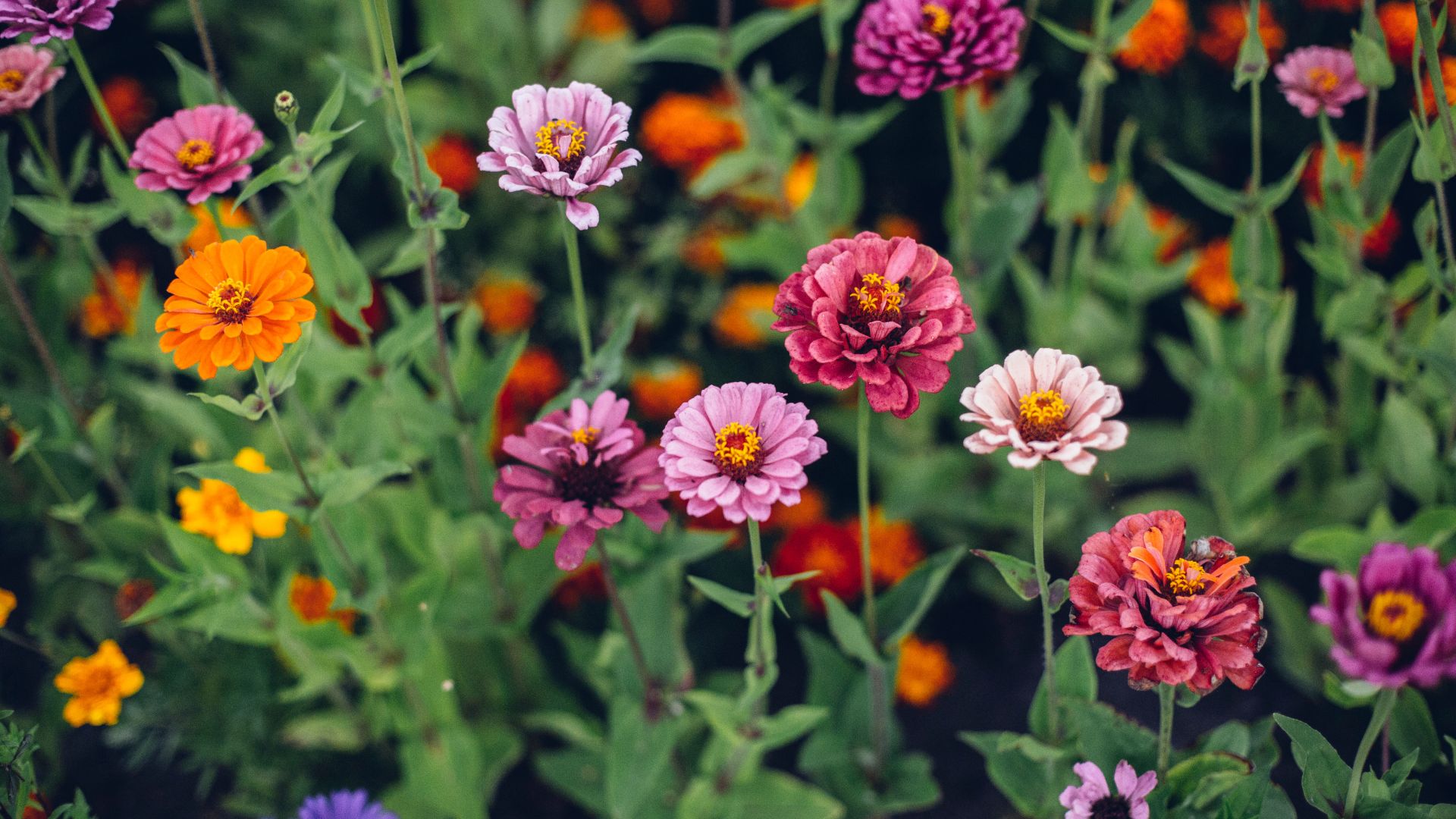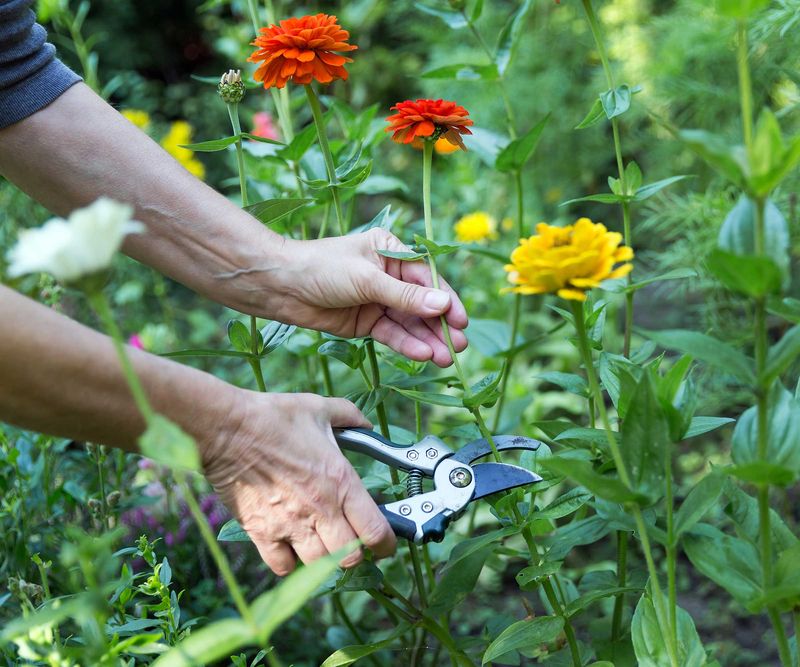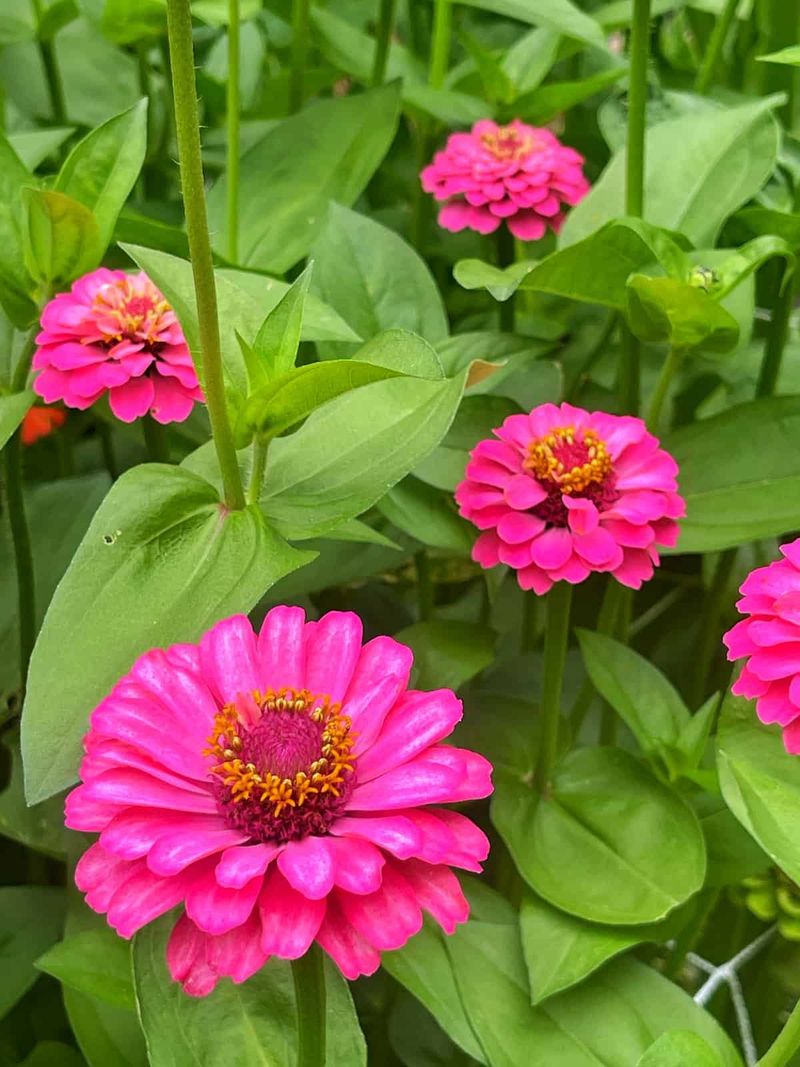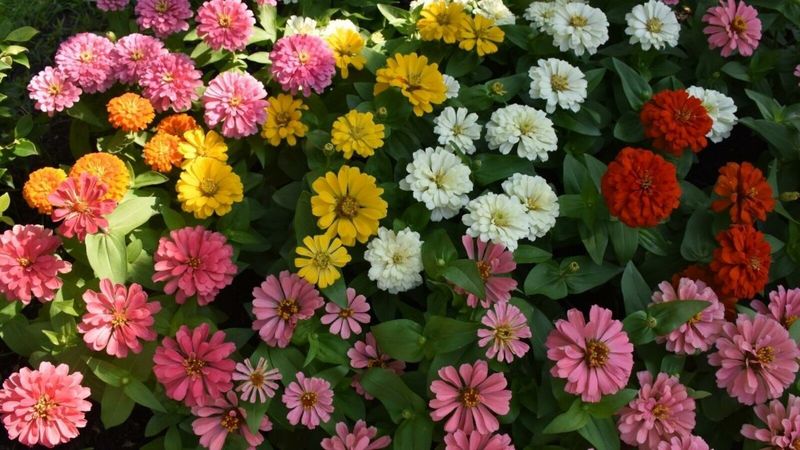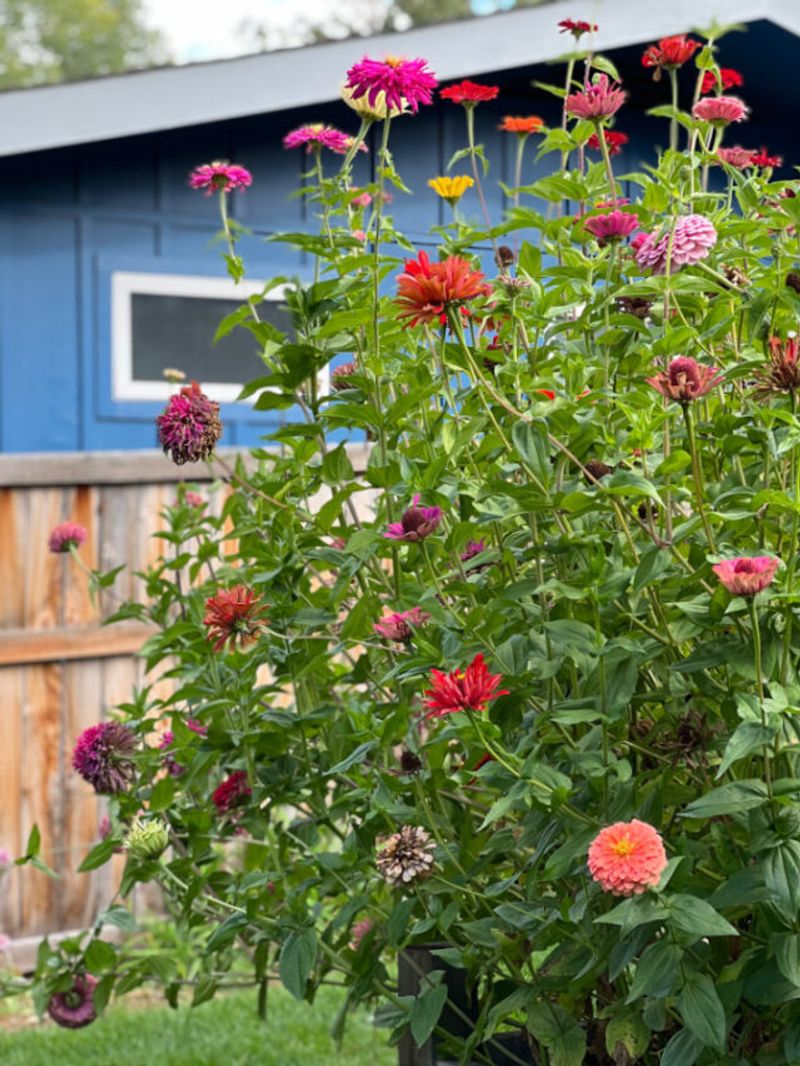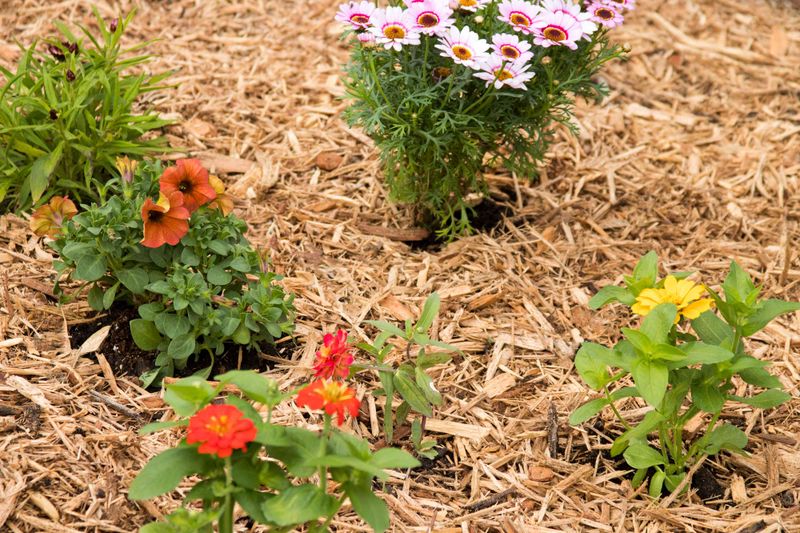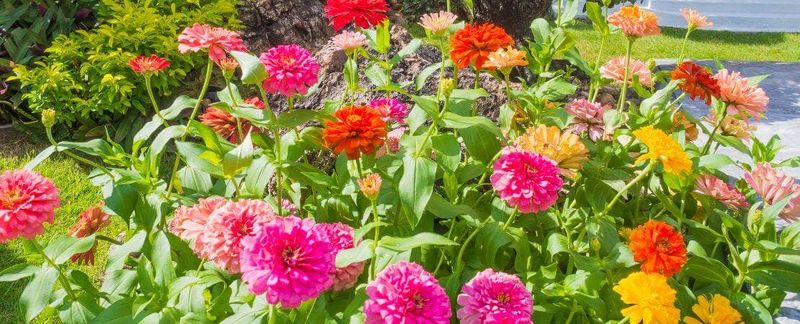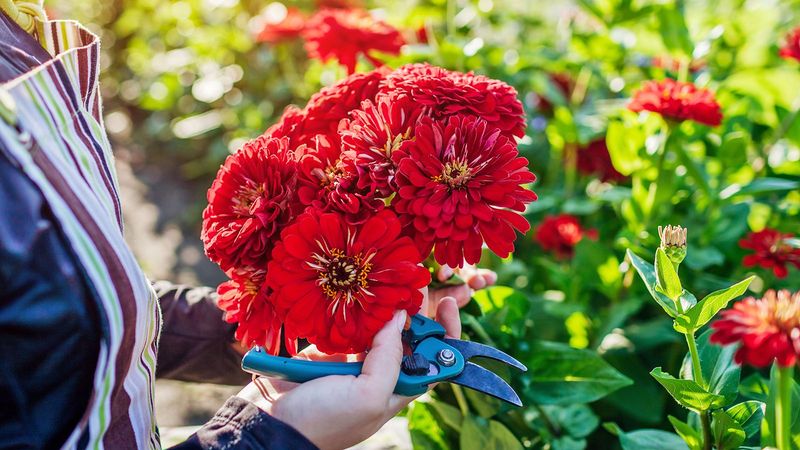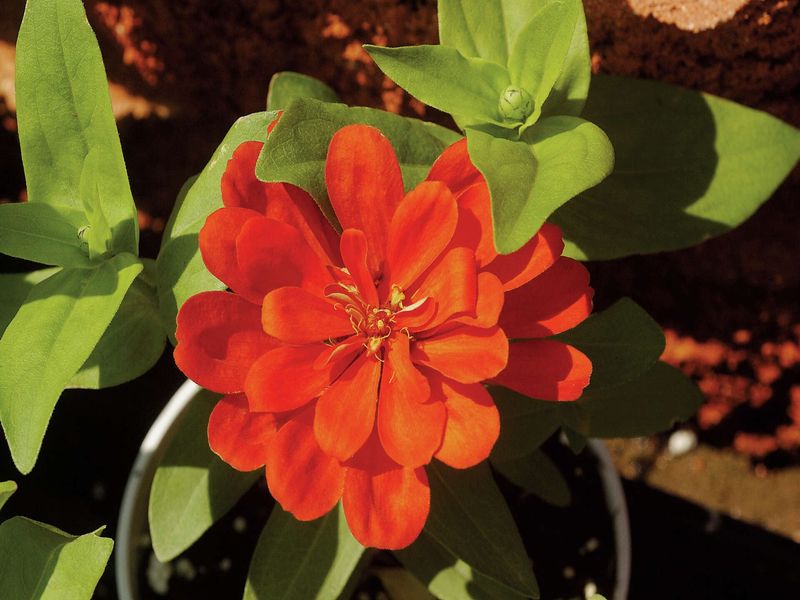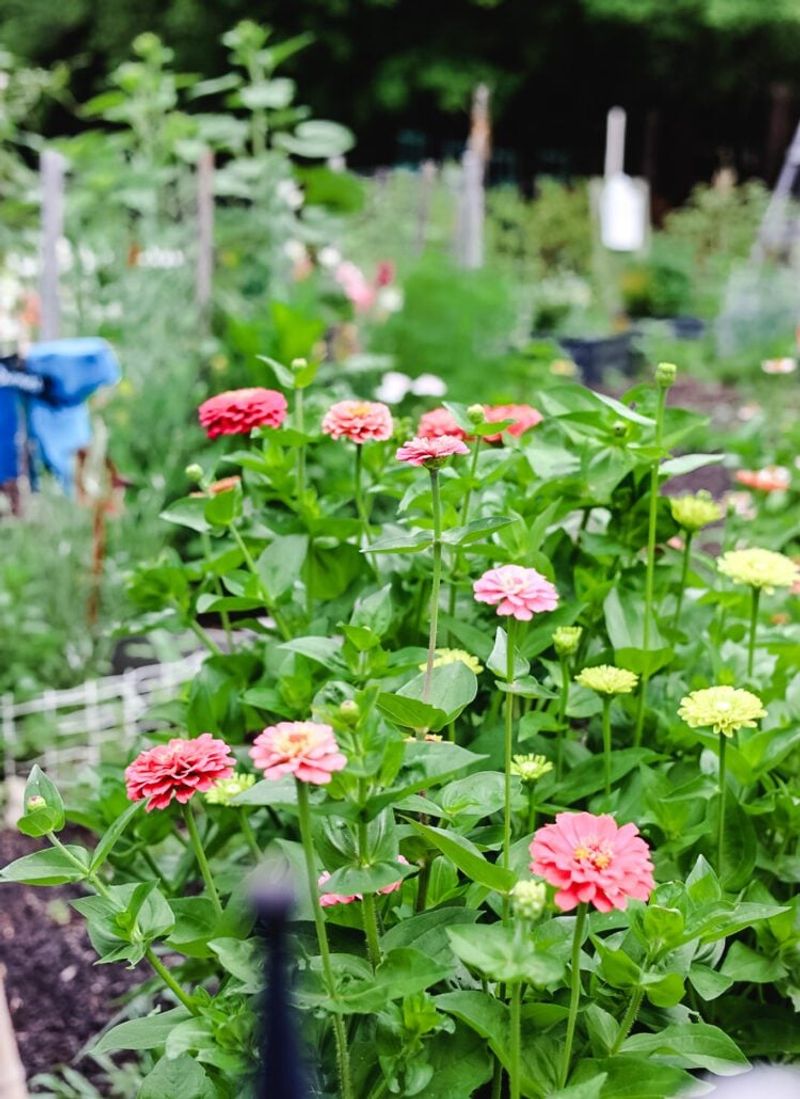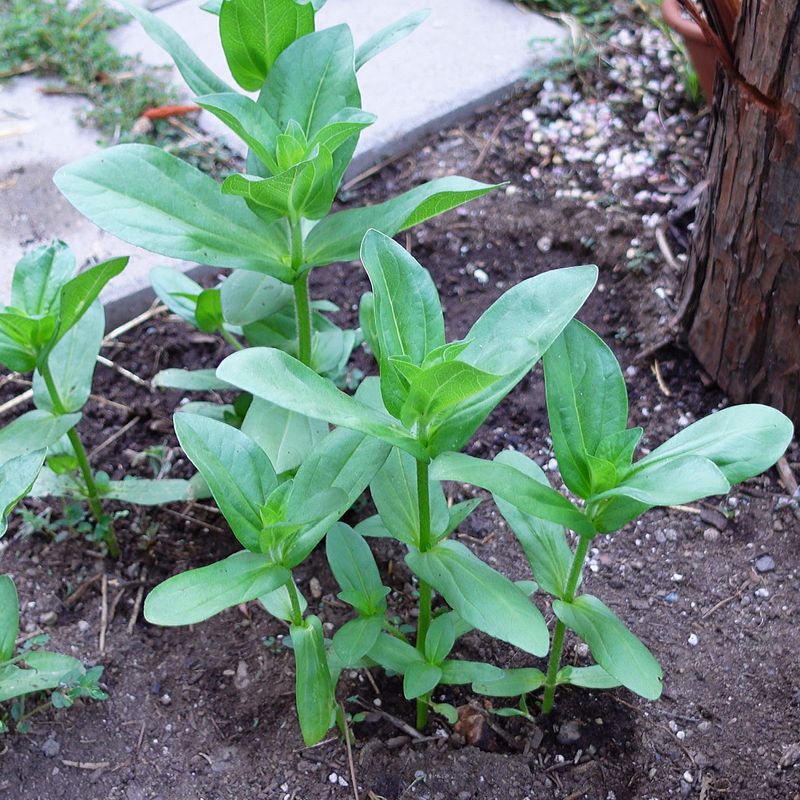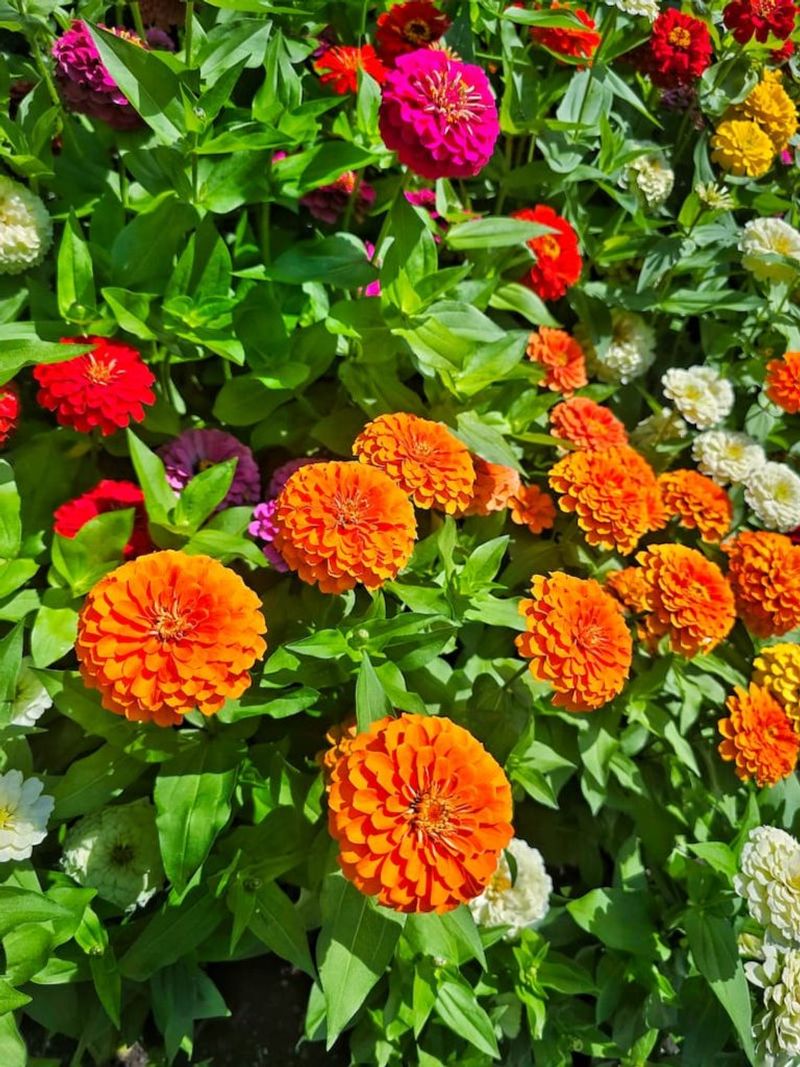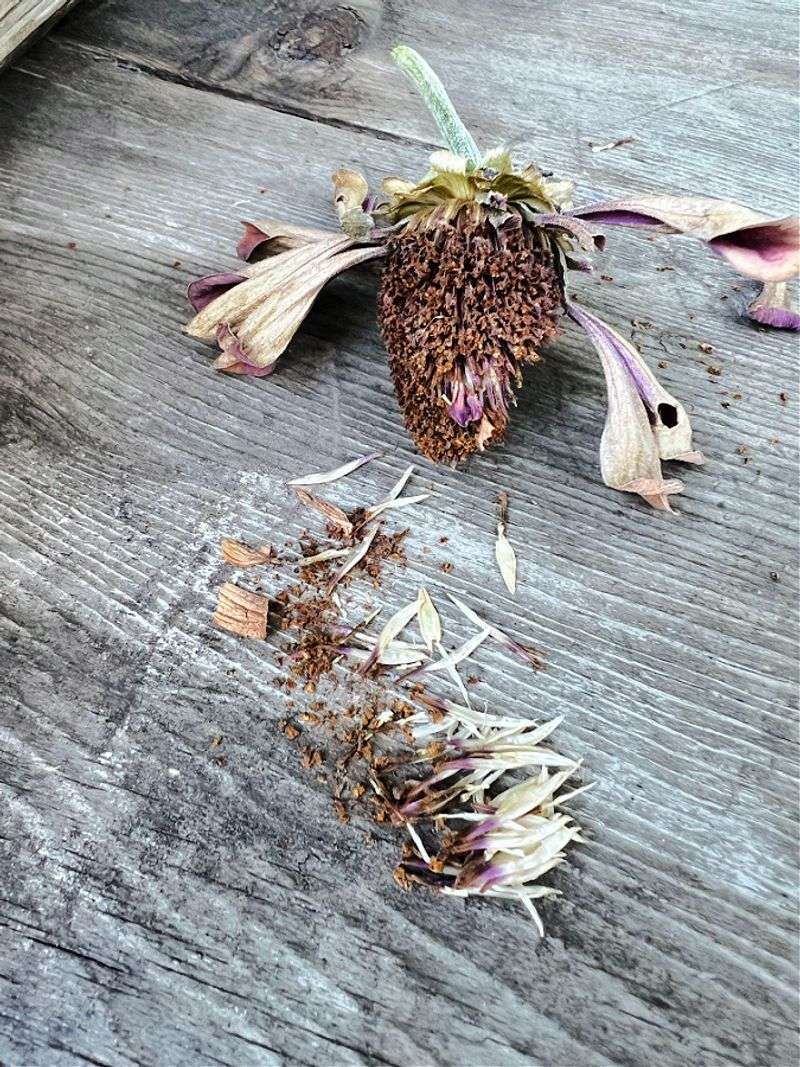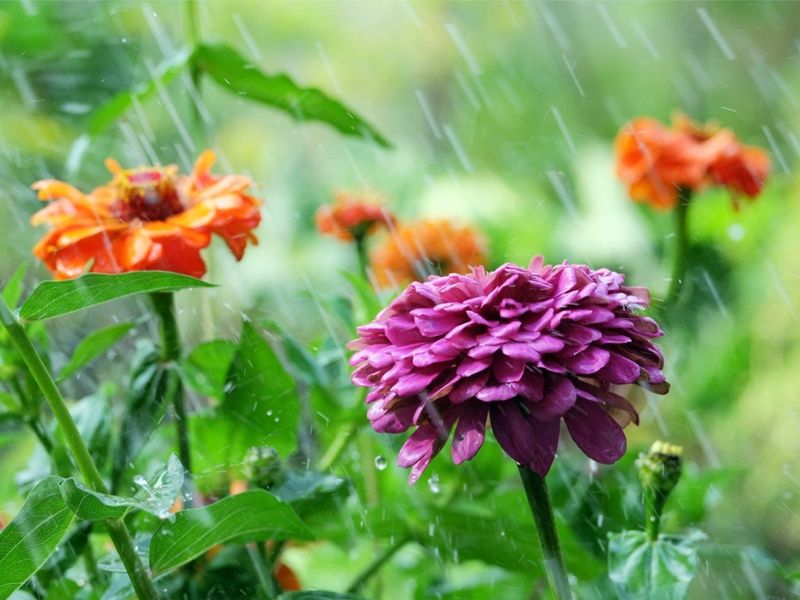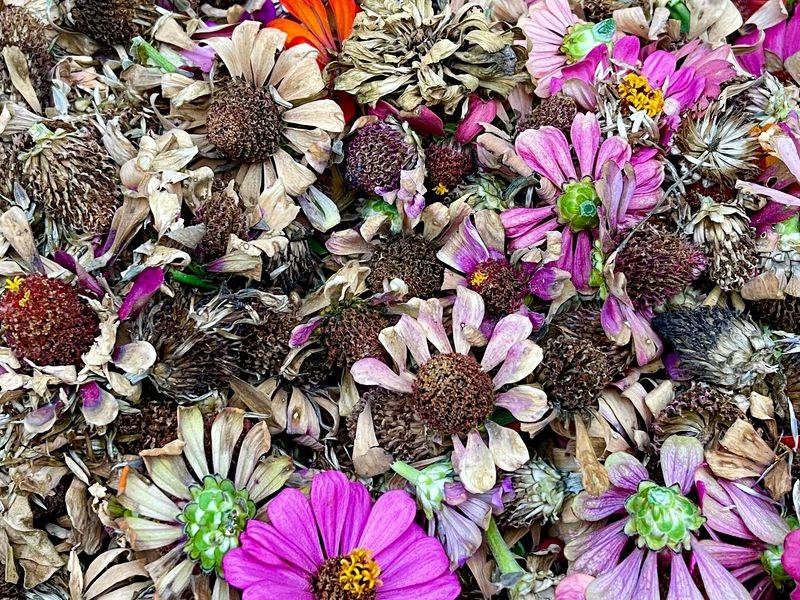Zinnias are one of my favorite flowers to grow—they’re bright, bold, and keep blooming for months if you treat them right. I love how they fill the garden with color just when everything else starts to fade. But I’ve learned the hard way that they’re not completely set-it-and-forget-it.
Without a little attention, zinnias can slow down or stop blooming altogether, even in the middle of summer. I’ve made those mistakes—skipping deadheading, forgetting to space them properly—and it definitely shows in the blooms. A bit of care really goes a long way.
Whether you’re new to gardening or just want fuller, longer-lasting flowers, these simple tips will help you get the most from your zinnias. Let’s make sure those blooms keep coming right through to fall.
1. Deadhead Regularly
Removing spent flowers is probably the single most effective way to keep zinnias blooming longer. When I first started growing these colorful beauties, I’d let the dead flowers stay on the plant, not realizing I was telling it to stop producing.
The plant’s energy goes into making seeds once flowers fade. By snipping off these finished blooms, you redirect that energy back into making new flowers instead of seeds.
I make it a habit to check my zinnias every few days with clean scissors or pruners, cutting just above a leaf node. This simple practice can double or even triple your bloom time through the season.
2. Water At The Base
Many gardeners make the mistake of watering zinnia plants from overhead. I learned this lesson after a particularly rainy summer when my zinnias developed powdery mildew and stopped flowering entirely.
Wet foliage creates the perfect environment for fungal diseases that can weaken or kill your plants. Instead, direct water at the soil level using a soaker hose or watering can with a long spout.
Morning watering gives any accidental leaf splashes time to dry before evening. This simple change in watering technique can prevent diseases that interrupt blooming and extend your zinnia display by weeks.
3. Provide Full Sun
My first attempt at growing zinnias was in a partially shaded corner of my garden. The plants grew tall but produced few flowers, and those that did appear were smaller than expected.
Zinnias are sun-worshippers that need at least 6-8 hours of direct sunlight daily to produce abundant blooms. When they don’t get enough light, they stretch toward the sun and put less energy into flowering.
After relocating them to my sunniest garden bed, the difference was remarkable – sturdier stems, more branching, and nearly triple the number of flowers. If your zinnias aren’t blooming well, insufficient sunlight is often the culprit.
4. Avoid Overcrowding
One year I got carried away and planted zinnia seedlings just a few inches apart. By midsummer, I had a crowded mess with lanky stems competing for light and air, resulting in fewer blooms and disease problems.
Proper spacing allows each plant to receive adequate sunlight, airflow, and nutrients. For most zinnia varieties, plants should be spaced 8-12 inches apart, with taller varieties needing even more room.
When I started giving my zinnias proper breathing room, they developed bushier growth with more flowering stems per plant. Don’t be tempted to squeeze in extra plants – fewer properly spaced zinnias will actually produce more blooms.
5. Feed Moderately
My neighbor once shared her “secret” for abundant zinnia blooms – she was dumping fertilizer on them weekly. When I tried this approach, I ended up with giant green plants but surprisingly few flowers.
Excessive nitrogen promotes lush foliage at the expense of flowers. For zinnias, a balanced, slow-release fertilizer applied once at planting time is often sufficient in average soil.
If your soil is poor, a second light feeding midseason using a low-nitrogen formula (look for higher middle and last numbers on the N-P-K ratio) can support continued flowering. Remember that over-fertilizing is worse than under-fertilizing when it comes to flower production.
6. Cut Flowers Frequently
For years I was hesitant to cut my garden zinnias for bouquets, thinking it would reduce the display in my garden. I couldn’t have been more wrong!
Cutting stems for vases actually encourages the plant to produce more branches and more flowers. Each cut stem typically results in two or more new flowering stems, creating a bushier plant with increased bloom capacity.
Now I harvest zinnia stems when flowers are fully open, cutting just above a leaf node where new growth will emerge. This regular cutting keeps the plants productive and gives me beautiful bouquets to enjoy indoors – truly a win-win gardening practice.
7. Mulch Around Plants
During a particularly hot summer, I noticed my unmulched zinnias would wilt by midday despite regular watering. Their flowering noticeably decreased during heat waves until I discovered the power of mulch.
A 2-3 inch layer of organic mulch around zinnia plants keeps soil moisture consistent and soil temperatures moderate. This reduces stress on the plants, allowing them to focus energy on flower production rather than survival.
Straw, shredded leaves, or compost work well as mulch for zinnias. Just keep it from touching the stems directly to prevent rot issues. This simple addition has kept my zinnias blooming steadily even through the hottest weeks of summer.
8. Prevent Weed Competition
Last summer I got busy with work and neglected weeding around my zinnias for just two weeks. The difference in flowering was immediately noticeable once weeds started competing with my plants.
Weeds steal water, nutrients, and sometimes even sunlight from your zinnias. This competition forces your flowers to divert energy from bloom production to simply surviving, resulting in fewer and smaller flowers.
I’ve found that regular light weeding, combined with the mulch mentioned earlier, keeps competition at bay. A few minutes of weeding each week pays off with weeks of additional blooms that would otherwise be lost to these garden thieves.
9. Choose Cutting Varieties
Not all zinnias are created equal when it comes to prolonged blooming. My first year growing zinnias, I planted a dwarf border variety that produced a lovely initial show but quickly finished flowering by midsummer.
Varieties specifically bred for cut flowers, like the ‘Benary’s Giant’ series or ‘Queen’ series, have been selected for their reblooming ability. These types naturally produce more side shoots and continue flowering longer than ornamental bedding types.
Switching to cutting-specific varieties extended my zinnia season by nearly two months. Look for phrases like “cut-and-come-again” or “continuous blooming” in seed descriptions to find the most productive varieties for extended flowering.
10. Monitor For Pests
Japanese beetles once decimated my zinnia patch in just three days. I was horrified to find the flowers skeletonized and the plants so stressed they stopped producing new buds entirely.
Regular inspection helps catch problems before they affect flowering. Check both sides of leaves and around flower buds for common zinnia pests like aphids, spider mites, and beetles at least twice weekly during growing season.
For minor infestations, removing pests by hand or with a strong stream of water is often sufficient. Severe problems may require insecticidal soap or neem oil. Addressing pest issues promptly prevents the plant stress that interrupts the blooming cycle.
11. Prevent Disease Problems
My zinnias used to succumb to powdery mildew every August, cutting their blooming season short by weeks. This common fungal disease appears as a white powder on leaves and can quickly spread throughout your plants.
Prevention is far more effective than treatment. Proper spacing for air circulation, morning watering, and keeping leaves dry are your first defenses against disease.
For added protection, I now apply a preventive spray of diluted milk (1 part milk to 9 parts water) or a commercial fungicide labeled for ornamentals every two weeks during humid weather. Removing any infected leaves immediately also helps keep the rest of the plant productive.
12. Grow In Well-Draining Soil
The year I planted zinnias in a low spot in my yard was a disaster. After every rain, water would pool around their roots, and eventually, the plants developed root rot and stopped flowering completely.
Zinnias absolutely require well-draining soil to thrive and bloom continuously. Soggy conditions lead to root diseases that can kill plants or severely reduce flowering.
If your soil is heavy clay or prone to waterlogging, consider creating raised beds or mounding the soil to improve drainage. Adding compost to improve soil structure also helps. I’ve found that zinnias planted in well-draining locations produce nearly twice as many flowers throughout the season.
13. Avoid Late-Season Transplanting
I once tried moving some established zinnias in July when rearranging my garden. Even though I was careful with the roots, the plants stopped flowering for weeks while they recovered from the shock.
Zinnias develop deep root systems and don’t respond well to being disturbed once they’re actively growing and flowering. The stress of transplanting causes them to focus on root regeneration rather than flower production.
Plan your zinnia placement before planting, or transplant only when seedlings are very young with just a few true leaves. If you must move mature plants, expect a significant pause in flowering that may last until the plant fully recovers, sometimes 3-4 weeks.
14. Pinch Young Plants
For years I let my zinnias grow naturally without any pruning. They would grow tall with one main stem and a few flowers at the top, but overall flower production was disappointing.
Then I learned about pinching – removing the growing tip when plants are 8-12 inches tall. This encourages multiple side branches to develop, each producing its own flowers.
The first time I tried this technique, my pinched plants produced 3-4 times more flowers than unpinched ones! Simply use your fingers to remove the top inch of the main stem above a set of leaves. That one-time pruning creates bushier plants with dramatically increased blooming potential.
15. Stagger Plantings
My first few years growing zinnias, I’d plant everything at once in spring. By late summer, many plants were exhausted and flowering had significantly declined, leaving gaps in my garden.
Now I stagger my plantings every 2-3 weeks from spring through early summer. This succession planting ensures I always have fresh, vigorous plants coming into bloom as older ones begin to decline.
This approach provides continuous peak flowering throughout the season. In my zone 6 garden, I make three plantings: one after frost danger passes, another in early June, and a final sowing in early July. The later plantings often continue blooming until the first hard frost.
16. Save The Strongest Seeds
After several years growing the same zinnia variety, I noticed flowering performance declining. Plants seemed less vigorous and produced fewer blooms until I started being selective about which seeds I saved.
Not all zinnia seeds produce equally floriferous offspring. By selecting seeds only from plants with exceptional flowering habits – those that bloomed earliest, longest, or most profusely – I gradually improved my strain.
I mark my best-performing plants with colorful garden tape and let some of their late-season flowers mature fully for seed collection. This selective seed-saving has resulted in zinnias that naturally bloom longer and more abundantly than the original commercial seeds I started with.
17. Maintain Moderate Moisture
During a particularly dry spell, I noticed my zinnias forming fewer flower buds. Thinking more water would help, I doubled my watering, only to find the plants developing yellowing leaves and still not flowering well.
Zinnias prefer consistent, moderate moisture – neither drought-stressed nor waterlogged. Both extremes can cause plants to pause flower production while they cope with the stress.
I’ve found that deeply watering once or twice weekly (depending on rainfall and temperatures) keeps zinnias blooming steadily. The goal is moist but not soggy soil. Using a soil moisture meter helped me find that sweet spot where my plants flower most prolifically.
18. Keep Garden Clean
One summer I got lazy about garden cleanup, leaving fallen leaves and spent flowers on the ground around my zinnias. Soon I noticed increased disease problems and fewer fresh blooms.
Plant debris can harbor pests and disease pathogens that reduce flowering. Fallen leaves, dropped petals, and other plant material create humid microclimates where fungi thrive and insects hide.
Regular garden sanitation – removing dead plant material from under and around your zinnias – reduces these problems significantly. I now make it a habit to clean up around my plants weekly, and the improvement in continuous flowering has been remarkable.
19. Avoid Chemical Drift
My zinnias mysteriously stopped blooming one July after my neighbor sprayed herbicide on a windy day. The plants didn’t die, but they produced deformed leaves and no new flower buds for weeks.
Zinnias are extremely sensitive to herbicide drift, even in tiny amounts that don’t kill the plants outright. Exposure to weed killers can cause twisted growth and interrupt the flowering cycle temporarily or permanently.
Keep all herbicides far from your zinnia patch, and be aware of spraying happening in neighboring areas. If you must use herbicides elsewhere in your garden, apply on still days and use a shield to prevent drift. Your zinnias will reward your caution with continuous, perfect blooms.

